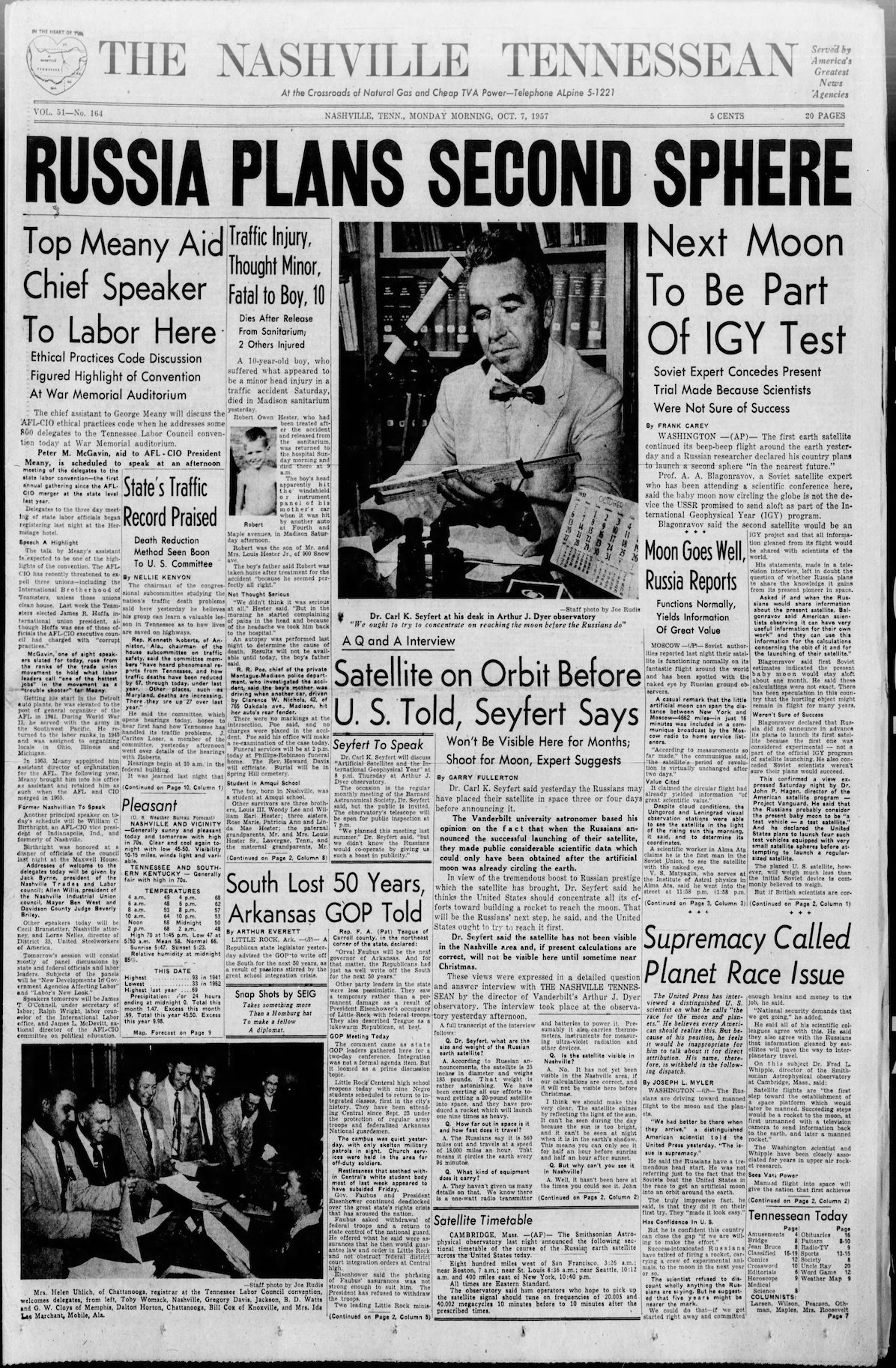The Space Race took off in earnest with the Soviet Union’s successful launch of Sputnik I on October 4, 1957.
The United States was making plans to launch its own satellite, the Vanguard, in the near future, but the American public was caught off guard and thus alarmed by the orbiting 184-pound, beach-ball-sized craft.As the article’s headline suggested, the Soviets did indeed launch Sputnik II on November 3, which was even heavier than Sputnik I and carried the ill-fated dog Laika.
The Tennessean interviewed the Dyer Observatory director at the time, Dr. Carl Seyfert, to ask what was known about the satellite and how curious Nashvillians could view it. He obliged and put forth his opinion that the U.S. should put its focus on getting to the Moon first.
The United States’ first successful satellite launch wasn’t until the Explorer I lifted off on January 31, 1958. Its scientific payload discovered the Earth’s Van Allen radiation belts. Vanguard I became the fourth artificial satellite to orbit Earth upon its launch on March 17, 1958. In July of that year, Congress passed the “Space Act” that created NASA. The race to the Moon was on.
<- Previous May 20, 2020 Next ->
Tucked up among the wooded hilltops of northern Brentwood, Vanderbilt Dyer Observatory is considered by many to be a hidden treasure of the area. Visitors to our satellite campus not only learn about some of the cutting-edge discoveries and science in astronomy but they also get a dose of nature, history, and many other things while here. Over the years, we at Dyer Observatory have made the preservation of our facility and grounds a key mission. Preservation not only entails things such as maintaining our telescopes — it also includes keeping a record of days passed. Since 1953, we have amassed a number of interesting images, pieces of equipment, and ephemera. Every day tends to bring new surprises. In continuing our tradition of public education and outreach, Stellar Finds regularly provides an image and description of the diverse paraphernalia associated with Vanderbilt Dyer Observatory and the history of astronomy at Vanderbilt University.
